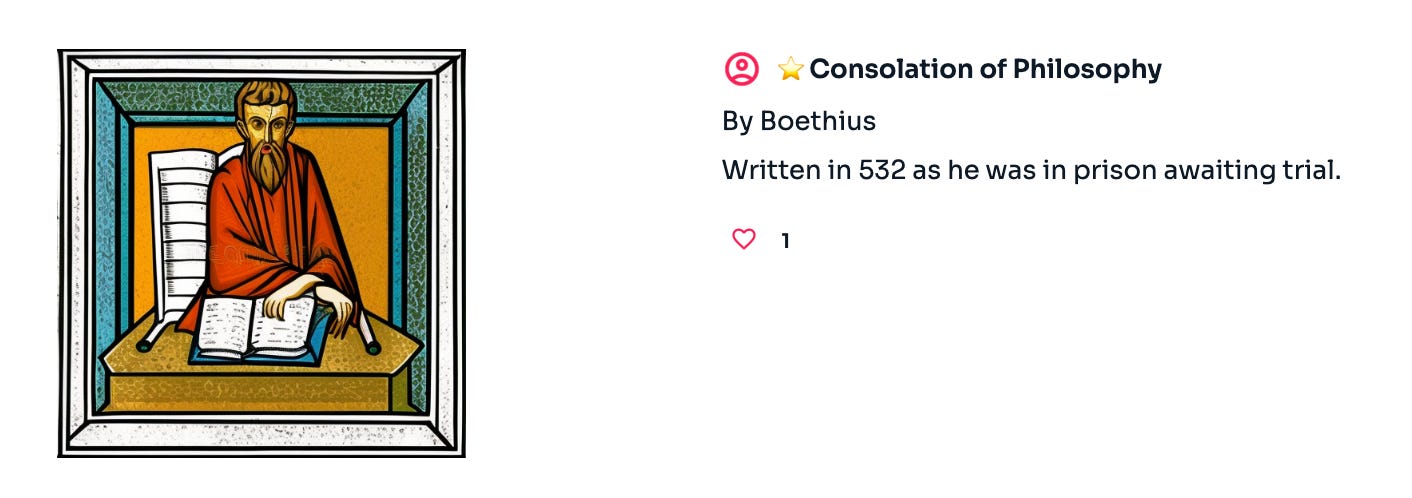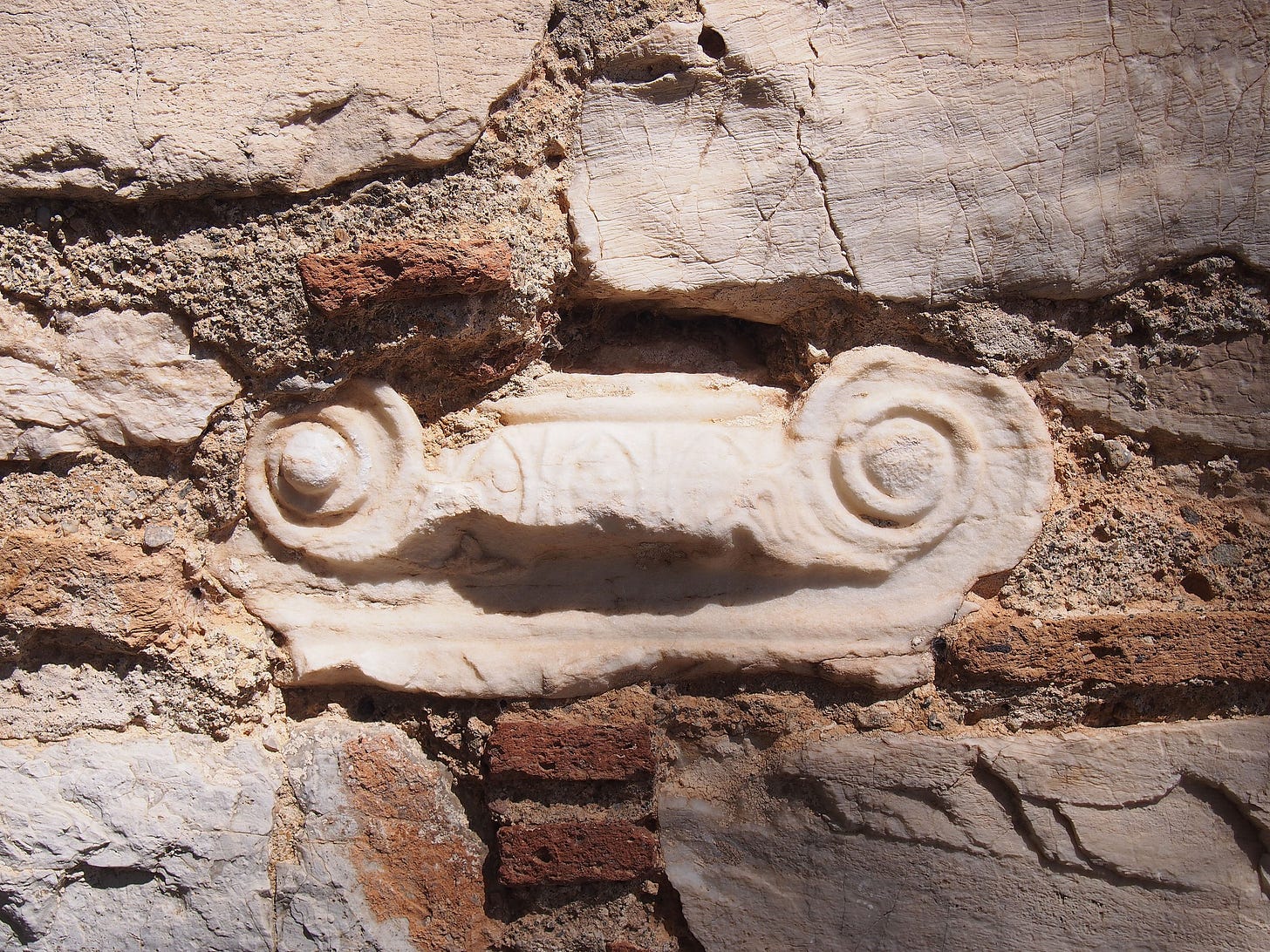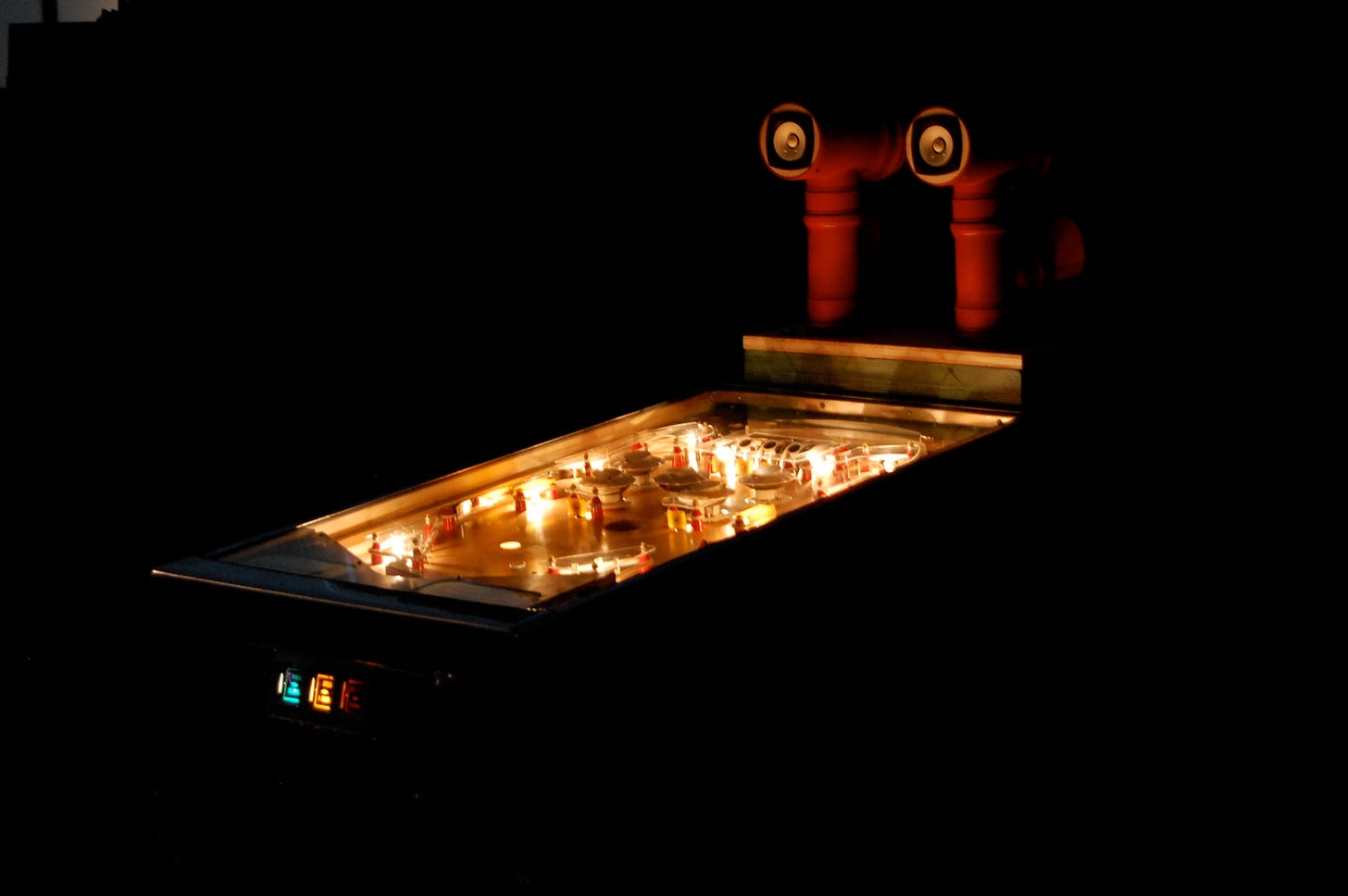When I was 18 years old I wrote a cringe theatre play. It featured three protagonists, one the voice of reason, one the voice of passion, and one the unlikely hero stereotype. It was my utterly pretentious attempt at reconciling my artistic urges with being good at math, my passion for philosophy with my hormone-driven teenage self. The other grand project I set out to was called “Structure and Progress” and was meant to be a grand philosophical work. Not only was it a ridiculous endeavour, it also never got past a handful of pages. But like so many things in life, its tenets kept haunting me1, surfacing again and again in different shapes and forms. For example when I was a media artist I created a piece with my friend and collaborator Fares Kayali titled Bagatelle Conrète2. A pinball machine from the 70s, stripped of all game elements, reduced to pure play, enhanced with microphones and music software that would sample your gameplay and remix it according to how intensely you played.
What I had done with this piece was to only provide structure for play. No instructions, no rules about how the process of interaction was supposed to be were provided. In game development, we call this a sandbox, despite the fact that it applies to all playground structures. Playground elements suggest a process but don’t enforce it beyond the restrictions of physics and physiology. We bring our own experimental process with us and explore our own creative potential by testing the limits of the structure we interact with. We play, we toy around, we learn – about us and the world around us. Yes, philosophically this ties in nicely with constructivism as well as phenomenology:
Phenomenology is a philosophy of experience. For phenomenology the ultimate source of all meaning and value is the lived experience of human beings. All philosophical systems, scientific theories, or aesthetic judgments have the status of abstractions from the ebb and flow of the lived world. (Paul B. Armstrong)
You’re the pinball bouncing around in a given structure but you’re also the emotional human entity excitedly pushing the buttons that move the paddles of the pinball machine. Life is just structure and process, as long as you apply enough abstraction to your worldview. Like a lot of philosophical perspectives, perceiving the world as process and structure does not lead to metaphysical revelations. And yet it is a useful tool for design. Like all design tools and philosophical perspectives – or maybe we should call them lenses in this instance – it highlights some aspects of the world but casts a shadow over others. A shadow that makes them vanish into the background.

In this light we can design things that help people to explore themselves and the world around them. And that’s how LAIKA should be seen, how it was meant to be situated in this weird world of AI automation threats. It’s an unpredictable structure to play with, a toy that – like all good toys – can teach the person interacting with it something about the past and something about their creative practice. Rubbing your thoughts against Marcus Aurelius’ stoic philosophies, the Communist Manifesto, and Mary Shelley’s fantastic fiction teaches you about the history of writing, the history of thought, about who we are as humans and how we express ourselves. The process of writing becomes and exploration, the artefacts assembled become Mono no aware – stills of the ephemeral. Like holiday photos they maintain a hint of the moment but are forever just a shadow of the experience.
LAIKA is not a tool for productivity, it’s not even trying to be one. It is aiming far higher and far lower than other AI writing tools. That means it has quite a learning curve and the techniques you’ve learned from interacting with other text-driven AI tools can not be applied. We will never introduce processes that prescribe how to work with LAIKA beyond what is technically and conceptually necessary to unlock complex interactivity. Instead, we will continue to give you an as safe3 as possible play area – a sandbox to build your own creative sand castles in. LAIKA is a playground for thinking with words. LAIKA is pure structure. You bring your own process.

The philosophy of Structure and Process once again only filled a pitiful few paragraphs, nearly 30 years after its conception. And yet, the idea is going to hang around with me, gently illuminating my mental cave walls, casting light and shadow. Maybe one day I’ll dig out my tragic theatre play, too, and look at LAIKA from the perspective of emotion and rationality. Creativity pinball is more fun, though. Enjoy our playground built out of Versatzstücke4 of the history of humanity.
The cringe never left but nowadays I live it out in dad jokes, puns, and metaphors that result in bodily reactions. Please roll with me.
Sadly all traces except for a – you guessed it, pretty cringey – video have vanished from the surface of the internet. I can’t recall where the machine itself went.
By safe I mostly mean that you should be able to gracefully recover from any situation you got yourself into.


